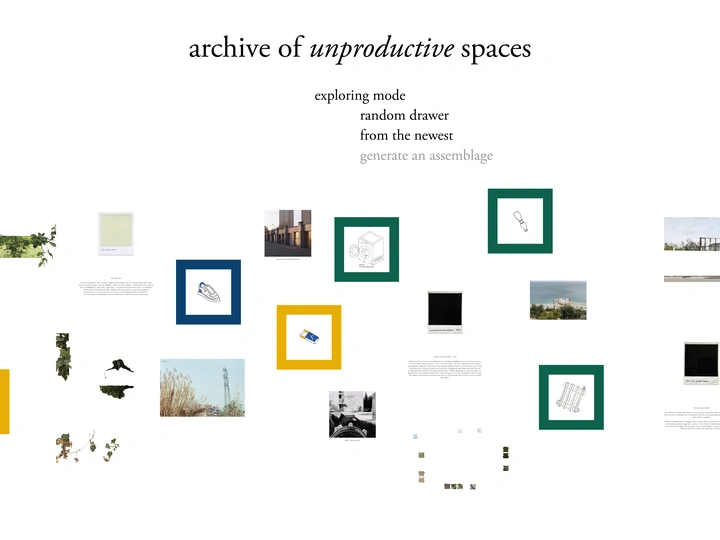An alternative archive of unproductive spaces

As a researcher, architect and visual artist, I explore ways in which architecture could adapt to the challenges of current socio-economic and climate crises, so that architects could become more akin to guardians of space. In my practice, I apply an interdisciplinary approach, drawing from my interest in visual art, film, literature, and geography.
I completed my BSc in Architecture and Urban Design at Wrocław University of Science and Technology in 2020. For my final project I developed the design of a community centre for locals in an otherwise touristified area in Kraków. I received The Best Bachelor Diploma award later that year from the Wroclavian branch of the Association of Polish Architects.
In April 2024 I graduated cum laude from the MSc Architecture and Urban Design course at Politecnico di Milano. I developed my thesis as a method of appreciation of unproductive spaces in cities. My project comprises my thesis designed as an artist’s book and a collection of prints and hand-drawn ephemera created by me that form an alternative archive of unproductive spaces. It was received positively by the examiners, and I got the highest grade for my innovative take on the role of architect in the subject of leftover spaces. I submitted my thesis to an open call on the theme of correspondence held by Fundacja Ziemniaki i, a research library and cultural institution in Warsaw, Poland. Both the archive and book will be showcased there by the end of the year.
Along academic lines, I have published an article on counter-mapping in Rzut, a Polish architectural quarterly magazine. I am one of the authors of the Wrocławiaki project, an Instagram account popularising architecture in Wrocław. I was also an architectural intern at Paradigma Ariadné and Miastopracownia. In the latter I have co-designed three community projects in Kraków, Poland, one of which - a linear park - was considered by the authorities for implementation.
I would love to have an allotment one day.
I have always been fascinated by the leftover spaces in cities. Strange stairs leading nowhere, paradoxical dead-ends, overgrown ruins lush with more-than-human life… In light of climate change, I believe that unproductive spaces should be allowed to thrive regardless of their economic utility. However, since they often disappear, through my project I wanted to re-think architects’ position towards them and invent a solution to guard and appreciate them instead. After conducting several field trips, an extensive literature review and interviews with both academics and practitioners from various fields, I have developed a collection of both hand-drawn and printed designs, including a zine, journals and maps, which together form what I call an alternative archive. Through the use of various media, representations, and perspectives, it tries to show the sheer potential these spaces hold.
The project was well received by the examiners; it will also be showcased by the end of the year in Fundacja Ziemniaki i, a cultural institution, in Warsaw, Poland.
However, I think the project I developed is just a beginning. I believe that the ideal envisioned finale of it would be its sharing, to enchant others with the magic I see in these spaces. I imagine this either through a construction of a website and/or through a series of events held in leftover spaces. The website would allow others to submit their stories thus becoming a perpetually growing and changing collection, which could be further enhanced by its design. Events, on the other hand, would help communities create new connections and meanings.
I think an archive made public has the potential to multiply perspectives on these, in fact, important spaces, and change the discussion on the need for their redevelopment. Since it directly addresses the environmental issues we face in a radical and collective way, I think the project could be of great value to LINA and contribute to its alliance of practices and ideas.